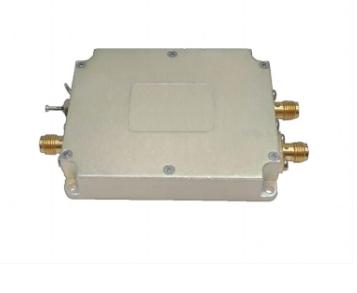In coherent optical communication systems, maintaining signal integrity is critical for high-speed data transmission. One key component in these systems is the Acousto-Optic Modulator (AOM), which shifts the frequency or modulates the amplitude of laser beams with precision. However, the performance of an AOM heavily depends on its driver electronics, particularly in terms of phase noise—a critical factor in coherent detection schemes.
Low-phase-noise AOM drivers are essential for minimizing signal degradation, ensuring high signal-to-noise ratios (SNR), and enabling reliable data transmission in applications such as fiber-optic communications, LiDAR, and quantum computing.
Why Phase Noise Matters in AOM Drivers
Phase noise in an AOM driver introduces jitter and spectral broadening, which can degrade the performance of coherent optical systems. Excessive phase noise leads to:
Increased bit error rates (BER) in digital communications
Reduced resolution in sensing and imaging applications
Lower fidelity in quantum information processing
To mitigate these effects, AOM drivers must provide stable, low-noise RF signals with precise frequency control.
Key Features of Low-Phase-Noise AOM Drivers
High-Frequency Stability – Uses ultra-low-noise oscillators (e.g., OCXO or atomic clocks) to minimize frequency drift.
Low Spurious Signals – Reduces unwanted harmonics that can interfere with the modulated optical signal.
Low Jitter Design – Ensures minimal timing fluctuations in the RF signal driving the AOM.
Temperature Compensation – Maintains performance stability across varying environmental conditions.
Low Power Consumption – Critical for portable and space-constrained applications.
Applications in Coherent Optical Systems
Optical Fiber Communications – Enhances coherent detection in high-speed networks (100G/400G/800G).
LiDAR & Remote Sensing – Improves ranging accuracy by reducing phase-induced errors.
Quantum Optics – Ensures high-fidelity qubit manipulation in quantum computing setups.
Scientific Research – Supports ultra-precise laser spectroscopy and interferometry.
Conclusion
Low-phase-noise AOM drivers play a crucial role in advancing coherent optical communication systems, enabling higher data rates, improved signal clarity, and greater system reliability. By leveraging advanced RF design techniques and ultra-stable frequency sources, these drivers help overcome the limitations imposed by phase noise, paving the way for next-generation optical technologies.
For engineers and researchers working in photonics, investing in high-performance AOM drivers is a key step toward optimizing system performance and unlocking new capabilities in optical communications and beyond.

